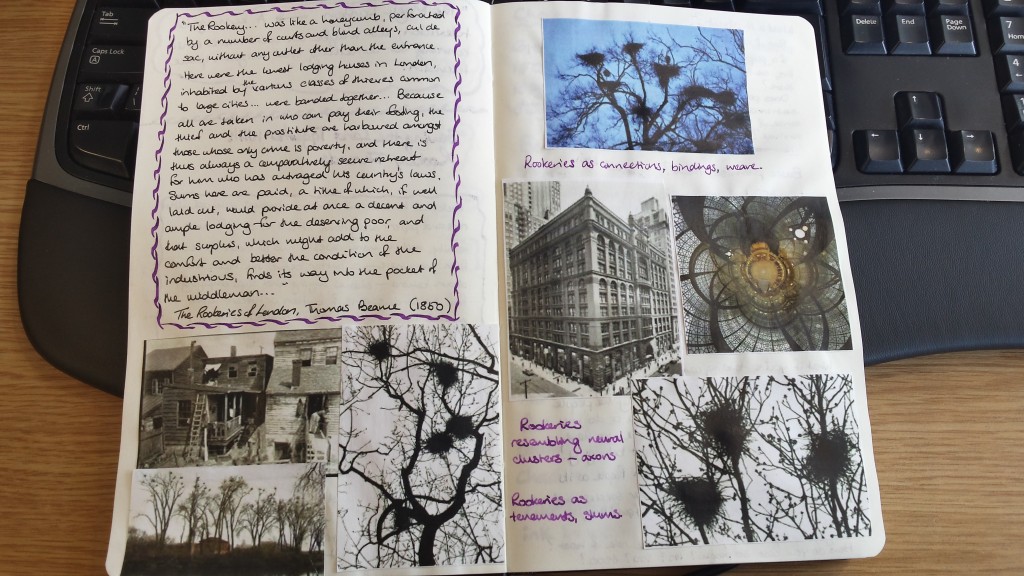I have no fixed process for writing. Stories come the way they come. Sometimes that means a single scene from which I have to uncover the rest of the story like an archaeologist digging up a pot or an ancient skeleton; other times it means sitting down with a pen and paper as soon as I’ve dragged myself out of bed, scribbling furiously while someone tries to ask me what I want for breakfast and whether I’ll be making coffee any time soon.
I keep what is probably some kind of commonplace. In fact, I keep several, and carry all of them around with me along with half the contents of a decent stationery shop, because I become quite anxious if I lack a way of draining the contents of my head at any given moment. I have a cherished, if battered, Timbuk2 El Ocho, which is well overdue for replacement, and it is full of the various things I need to keep the fiction imps at bay while carrying on with the rest of my life.
Most of my work germinates as pen and ink and paper. It used to be the case that every first draft found form on narrow-ruled, feint and margin, before I could begin to type. I still have a lot of material, things that have either not sold yet or never will, stashed around the place. For the sake of speed and saving time, I moved on from writing out the whole thing by hand, but I cannot entirely tear myself away from the pen and paper stage.

I don’t just keep notes, write down references, quotes, ideas, fragments of sentences that have a shape I want to explore. Sometimes the names of songs, places, even food finds their way in there. I find going about it this way, rather than doing everything by tapping away on a keyboard, helps encourage the creative process and entrains more of whatever engine it is that drags these things from the aether.
The book itself is a large plain moleskine (I also have two ruled, and a plain folio). I use a variety of fountain pens, coloured pens and pencils, Washi tape and Coccoina paste. The intention isn’t to keep a journal, although there are some truly beautiful ones out there (take a look on Pinterest — you’ll find a few on my Pen & Ink board, like this one). Still, the result of all my notekeeping being fun to review means I can happily spend time going back through my stack of notebooks looking at story fragments and ideas.
This practise has proved invaluable to me in greasing the wheels and adding a bit of low-end torque to jolt things out of a rut and free up narrative space. There are times when I need freedom to think, to mull, to plan, to let my subconscious chew on things for a while, or even to have a conversation, make like a sociable human being, but whatever it is inside my head that makes words has the bit between its teeth and won’t let go, even though it’s heading on entirely the wrong track. Cutting things out and sticking them into a notebook might not look like writing, but I can assure you, it is.


Pingback: Turning the page - 2016 writing goals - Someone's Imaginary Friend